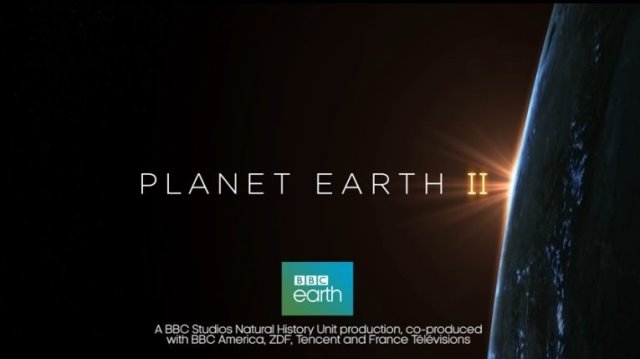Jaw-dropping nature footage is one of the many blessings provided by this age of TV abundance. So “Planet Earth II” — coming a decade after the original — seeks to up the ante, in part, by incorporating an environmental message.
Narrated by the venerable (and knighted) naturalist David Attenborough, this seven-part British-led documentary — shifting to BBC America, after the prior version aired on Discovery Channel — again spans the globe, yielding breathtaking images in the struggle for survival.
Already a huge hit in the U.K., the episodes appear somewhat arbitrary in their classification, with the first five divided into “Islands,” “Mountains,” “Jungles,” “Deserts” and “Grasslands.”
Each of those, however, weaves in issues regarding climate change and its affect on animal populations, along with the requisite visual stunners, like two huge Komodo dragons battling for mating privileges or the peculiar mating rituals of snow leopards.
The most arresting hour, meanwhile, might be “Cities,” which chronicles the ways various species are evolving to survive in densely populated areas as humans eat away at their habitats. Some creatures are surprisingly adept in that regard, from peregrine falcons thriving among New York skyscrapers to packs of hyenas roaming the streets of Ethiopia, feasting on discarded scraps from butcher shops.
Executive producer Mike Gunton said one of the project’s goals was to reflect “a building groundswell of consciousness about the fragility of the planet.” Yet the filmmakers were also mindful, he noted, not to stand on a soapbox.
Overall, the documentary offers a range of tones, from the harrowing to the playful.
Beyond evoking a sense of wonder, Gunton noted the most impactful segments tend to make the larger issues at play readily understandable, such as a sequence involving newly hatched turtles, struggling to find the water they must reach to survive because they are confused by the nearby glow of city lights.
The challenge of “Planet Earth” and similar productions is to present nature in a way that doesn’t Disney-fy it, for lack of a better term — that depicts the natural world’s cold truths along with its splendor.
As Gunton put it, the producers are cognizant of wanting the program to be entertaining and revelatory, without glossing over the more brutal aspects of life in the wild. “We’re not making fairy stories,” he said, “so we have to show the realities.”
For the most part, “Planet Earth II” deftly toes that line, even when the lens is trained on animals that resemble plush toys, like an enormous gathering of penguins and their fuzzy offspring. (That said, the penguins fare better, generally, than baby iguanas, shown being picked off by predators as they make a mad dash for safety.)
The final hour is again devoted to behind-the-scenes footage and the extraordinary lengths to which the filmmakers went to bring home this material, which only heightens appreciation for the project’s artistry.
BBC America sister channels AMC and SundanceTV will simulcast the premiere, helping launch a program that should possess considerable appeal among children and adults alike. Because whatever the locale, “Planet Earth” again provides a pretty spectacular view from almost every angle.
“Planet Earth II” premieres February 18 at 9 p.m. on BBC America.



